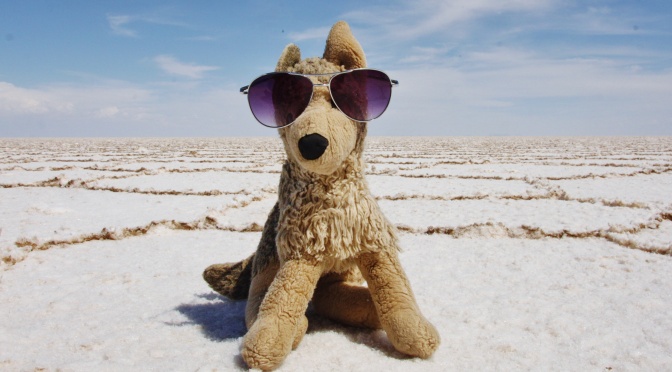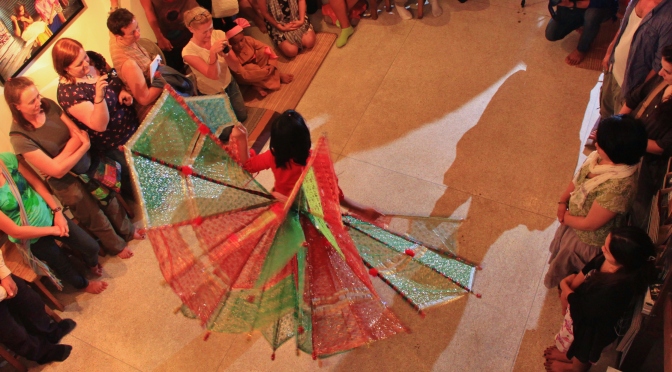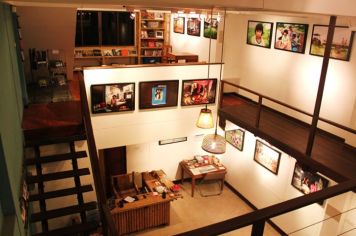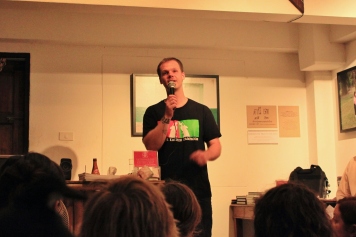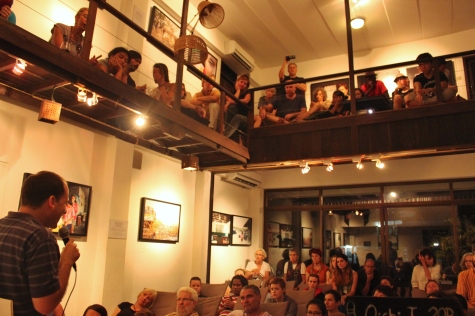One of the top travel destinations we had been looking forward to in Bolivia is the famous and photogenic Salar de Uyuni, the largest salt flat in the world. To give you an idea of the unique landscapes we got to experience there, I shot video of Mika hooping and we took some…creative liberties with the footage. Enjoy!
*Update: Mika’s hoopdancing was featured on Hooping.org. Woot!
Uyuni is most known in photos for having surreal reflective surfaces where the wet salt completely mirrors the sky above, creating insane visual illusions. Unfortunately we missed the wet season, though our experience on the flats was still mind-bogglingly cool. Our trip launched from the desert town of Uyuni, which is nothing special and these days exists more or less solely as a jumping-off point for multi-day tours of the salar. The group we were with consisted of a Belgian couple, a young Frenchman, and guy from Finland who is possibly the quietest person I’ve ever met. Our guide, Rudy, was a very friendly young Bolivian man that tolerated a carload of foreigners putting on their diverse music choices when clearly all he wanted to listen to was (terrible) Latino pop and reggaeton.
Our first stop was the “train graveyard” just outside Uyuni, where rusted relics from the 1800s mining trade were abandoned as their European conductors gradually moved home or died without passing on the secrets of locomotive operation to local workers. Next was Colchani, a small village at the edge of the salt flats that exists as a tourist trap and small-scale table salt production zone. A local demonstrated the process of salt refining by hand (heat, mix in pure iodine, cool, scoop into a plastic bag, melt the bag closed, sell as a keepsake for tourists), but we got the feeling that most real production of salt used in homes today is done in a more industrial setting. Still, it was unique seeing huge mounds of salt piled up and drying. As our Land Cruiser trundled onto the salt plain itself, things got more interesting. The stark white landscape under the pure blue sky is a photographer’s dream, and by far the most characteristic part of a visit to Salar de Uyuni is playing with perspective photography. Along with the footage of Mika hooping, our group of new friends took turns snapping goofy photos of each other with various props or in odd configurations. Lunch (alpaca steak and quinoa) was served in a hotel out in the open plain made out of blocks of salt, and afterwards we continued on to an “island” out in the middle of nowhere. Isla Incahuasi is a relic from the days when the salar was at the bottom of a small, inland sea, and is covered with fossilized coral. On top of the coral grow cacti, many of which are over 1000 years old and have reached heights of 10 meters. That night, tour groups from various companies congregated in another salt hotel, which even had floors made of crystallized salt—an interesting novelty, but inconvenient if you ever want to, you know, walk on it or set something down.
The next day was a departure from the salt flats and an introduction to some of the geography and geology that would become very familiar over the following week. Southwest Bolivia, northern Chile, and northwest Argentina are full of volcanoes, high lakes, and red rock valleys. Vegetation is sparse in this high-altitude desert zone, and the landscapes often look somewhat Martian. Some areas are so harsh that boulders are eroded over the millennia by wind-borne dust and sand, resulting in bizarre shapes like the arbol de piedra (Stone Tree). We also visited a string of altiplano lakes that are home to huge flocks of flamingos. I never really imagined them in that kind of environment, but there they were, by the hundreds. Many of the lakes take on different hues such as deep red or green due to microorganisms that the bright pink birds feast on, and their shores are often covered in a pure white substance called borax. We also saw herds of vicuñas, wild and ridiculously adorable relatives of llamas that subsist on the sparse grasses and salty waters of the region.
Our final day started early, with breakfast served at 4 am and a bumpy ride out to a field of geysers. Unlike the regularly water-spouting geysers that I always associate that word with (a childhood visit to Old Faithful comes to mind), these were immense vents of steam that poured out continuously from fissures in the earth. Some were reminiscent of tea kettles at high boil, shooting tight jets of moisture directly upwards at immense velocity, while others created huge, slowly billowing plumes of steam that rose up steadily far above our heads. It was an impressive place to see daybreak, but the intense cold of the high-altitude dawn kept us ready to move on soon. The next stop was a hot spring at the edge of a lake, where we observed that the current temperature was actually below freezing. Needless to say, soaking in thermal baths was pretty ideal, and we were reluctant to get out. There was only one more thing to see that morning, a lake tinted green by its microbiology and perfectly reflecting a conical volcano behind it. From there, it was just a short drive to the Chilean border, where we said goodbye to Rudy and most of the tour group, and we and our French friend Sebastien continued onwards to the driest desert in the world: San Pedro de Atacama.

